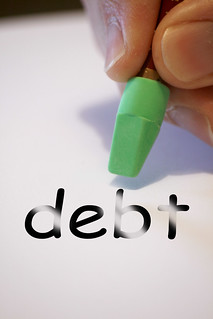Like many Americans, you have a few credit cards and do your best to manage your money responsibly but it seems every month you come up a few hundred dollars short. Trouble is your annual raise hasn’t kept pace with the rising costs of gas, groceries and other necessities let alone discretionary or luxury items like movie tickets, your fitness club membership or trips to the spa. You know if you don’t rein in your spending, you’re debt will grow and climbing your way out of debt will be even more difficult than it is right now. Nobody wants, or likes, to be in debt especially in today’s tough economy. While climbing your way out of debt may seem like achieving the impossible, there are several ways to do it.
When it comes to climbing your way out of debt the question weighing on most people’s minds is what is the best way? There’s a lot of conflicting information out there with many people believing you should pay off the credit card with the highest interest rate first while others think you should pay off the credit card with the lowest balance. Here are three options for paying off your credit cards and other loans.
 Like millions of Americans, you have several favorite stores you frequent. In fact, you have a credit card at one of these stores that has a $1,000 balance with a 14.99% APR. We’ll refer to this as your Fave Card. You also have a credit card that carries a $7,500 balance with a 24.3% APR. We’ll call this your Big Balance Card. And, unfortunately, you totaled your car six months ago and your parents loaned you $1,300 to replace it. You work at a local retailer and your budget allows you to put $500 toward debt repayment each month, $252.50 above your minimum payments. But with $9,800 worth of debt, paying it all off has you feeling depressed and discouraged, doubting your capability of ever paying it all off.
Like millions of Americans, you have several favorite stores you frequent. In fact, you have a credit card at one of these stores that has a $1,000 balance with a 14.99% APR. We’ll refer to this as your Fave Card. You also have a credit card that carries a $7,500 balance with a 24.3% APR. We’ll call this your Big Balance Card. And, unfortunately, you totaled your car six months ago and your parents loaned you $1,300 to replace it. You work at a local retailer and your budget allows you to put $500 toward debt repayment each month, $252.50 above your minimum payments. But with $9,800 worth of debt, paying it all off has you feeling depressed and discouraged, doubting your capability of ever paying it all off.
One approach to paying down $9,800 worth of debt is to work toward paying off one of your debts which will help you to build momentum and confidence in your efforts. In this case, you choose to pay off the credit card with the lowest balance first. With the $500 you have for debt repayment you’ll dedicate $245 for paying down your Fave Card, $225 (the minimum payment) for paying down your Big Balance Card and $30 for paying down what you owe your parents. The loan you have with your parents is the lowest priority because they aren’t charging you any interest. Using this approach you’ll pay $245 for four months plus $53.05 in the fifth month and have your Fave Card paid off. This includes $33.05 worth of interest, making the total $1,033.05 paid.
When it comes to paying off your Big Balance Card with a $7,500 balance, you’ll pay $225 per month for four months, $416.95 the fifth month, $470 for 17 months and a final payment of $321.53. This has you paying off your Big Balance Card in 23 months, paying $2128.48 in interest. So while you may have a $7,500 balance today, at the end of 23 months you will have paid $9,628.48 total.
When it comes to paying off the money you borrowed from your parents, you’ll continue to pay them $30 per month for 22 months, $178.47 in the 23 month and $461.53 for the final payment. While it will take you 24 months to pay them back, at least you didn’t have to pay any interest.
Using this approach, it will cost you $11,961.53 to pay off $9,800 worth of debt. In Part II we will take a look at two other strategies for paying off your debt.